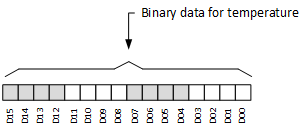SBASAF4 September 2021 TMAG5170
PRODUCTION DATA
- 1 Features
- 2 Applications
- 3 Description
- 4 Revision History
- 5 Pin Configuration and Functions
- 6 Specifications
-
7 Detailed Description
- 7.1 Overview
- 7.2 Functional Block Diagram
- 7.3
Feature Description
- 7.3.1 Magnetic Flux Direction
- 7.3.2 Sensor Location
- 7.3.3 Magnetic Range Selection
- 7.3.4 Update Rate Settings
- 7.3.5 ALERT Function
- 7.3.6 Threshold Count
- 7.3.7
Diagnostics
- 7.3.7.1 Memory CRC Check
- 7.3.7.2 ALERT Integrity Check
- 7.3.7.3 VCC Check
- 7.3.7.4 Internal LDO Under Voltage Check
- 7.3.7.5 Digital Core Power-on Reset Check
- 7.3.7.6 SDO Output Check
- 7.3.7.7 Communication CRC Check
- 7.3.7.8 Oscillator Integrity Check
- 7.3.7.9 Magnetic Field Threshold Check
- 7.3.7.10 Temperature Alert Check
- 7.3.7.11 Analog Front-End (AFE) Check
- 7.3.7.12 Hall Resistance and Switch Matrix Check
- 7.3.7.13 Hall Offset Check
- 7.3.7.14 ADC Check
- 7.4 Device Functional Modes
- 7.5 Programming
- 7.6 Register Map
- 8 Application and Implementation
- 9 Power Supply Recommendations
- 10Layout
- 11Device and Documentation Support
- 12Mechanical, Packaging, and Orderable Information
Package Options
Mechanical Data (Package|Pins)
- DGK|8
Thermal pad, mechanical data (Package|Pins)
Orderable Information
7.5.1.2 Temperature Sensor Data
The TMAG5170 temperature sensor will measure temperature from –40°C to 170°C. Figure 7-6 shows the temperature stored in the 16-bit TEMP_RESULT register. With DATA_TYPE = 00b, the 16-bit temperature data can be accessed through regular 32-bit SPI read. Use Equation 15 to calculate the temperature.
Equation 3. 

where
- T is the measured temperature in degree Celsius.
- TSENS_T0 is the reference temperature in degree Celsius as listed in the Section 6.5 table.
- TADCRES is the change in ADC code per degree Celsius as listed in the Section 6.5 table.
- TADCT0 is the TEMP_RESULT decimal value at reference temperature, TSENS_T0 as listed in the Section 6.5 table.
- TADCT is the measured TEMP_RESULT decimal value for temperature T.
With DATA_TYPE ≠ 00b, the 12 MSB bits from the TEMP_RESULT register can be accessed. In this mode, use Equation 17 to calculate the temperature.
Equation 4. 

 Figure 7-6 Temperature Sensor Data Definition
Figure 7-6 Temperature Sensor Data Definition